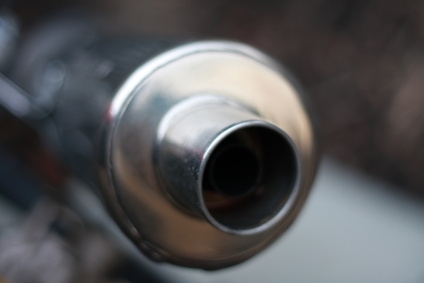
Calculating the exhaust gas flow based on a standard four-cycle engine can be straightforward, providing you take accurate measurements, use the correct values in your calculations and record the results carefully. The procedure only works for standard, throttled engines with compression ratios of 10 to 1. Novel ideas for measuring exhaust gas flow by tracing carbon dioxide are being put forward, but have not yet been patented.
Unscrew the oxygen sensor at the beginning of the exhaust system. Drill a small hole through a bolt that fits your oxygen sensor. Weld a piece of metal pipe to the head of the bolt, wearing protective goggles and gloves. Screw the bolt to the opening in the exhaust system where the oxygen sensor previously sat. Attach a length of hose from the temporary fitting you have made to the differential pressure gauge. According to Free Patents Online, the hose should measure 20 m or less and have an optimum diameter of 1.0 to 50 mm.
Measure the displacement of exhaust gas during each stroke using the newly positioned differential pressure gauge. You need the maximum back pressure, so take the engine up to full throttle in first gear. Work out the volume of one cylinder when the exhaust valve starts opening. This will be the same as the piston displacement minus the volume from the bottom dead center to the exhaust valve opening. Average the pressure measurements using a flow meter.
Define the number of strokes that occur in one minute by dividing the engine's revolutions per minute by two, because one stroke occurs every two revolutions in a standard engine. Multiply the number of strokes per minute by the displacement volume of exhaust gas in each stroke. Record the resulting exhaust flow per minute. As an example, an engine with a 3-liter displacement working at 3,000 rpm will pump 4,500 liters through the system in one minute.
Multiply the exhaust flow per minute by how many cylinders the car has to tailor the calculation to your particular engine. Record the value obtained. Connect the ADC to a signal processing central processing unit if you wish to analyze the results computationally.